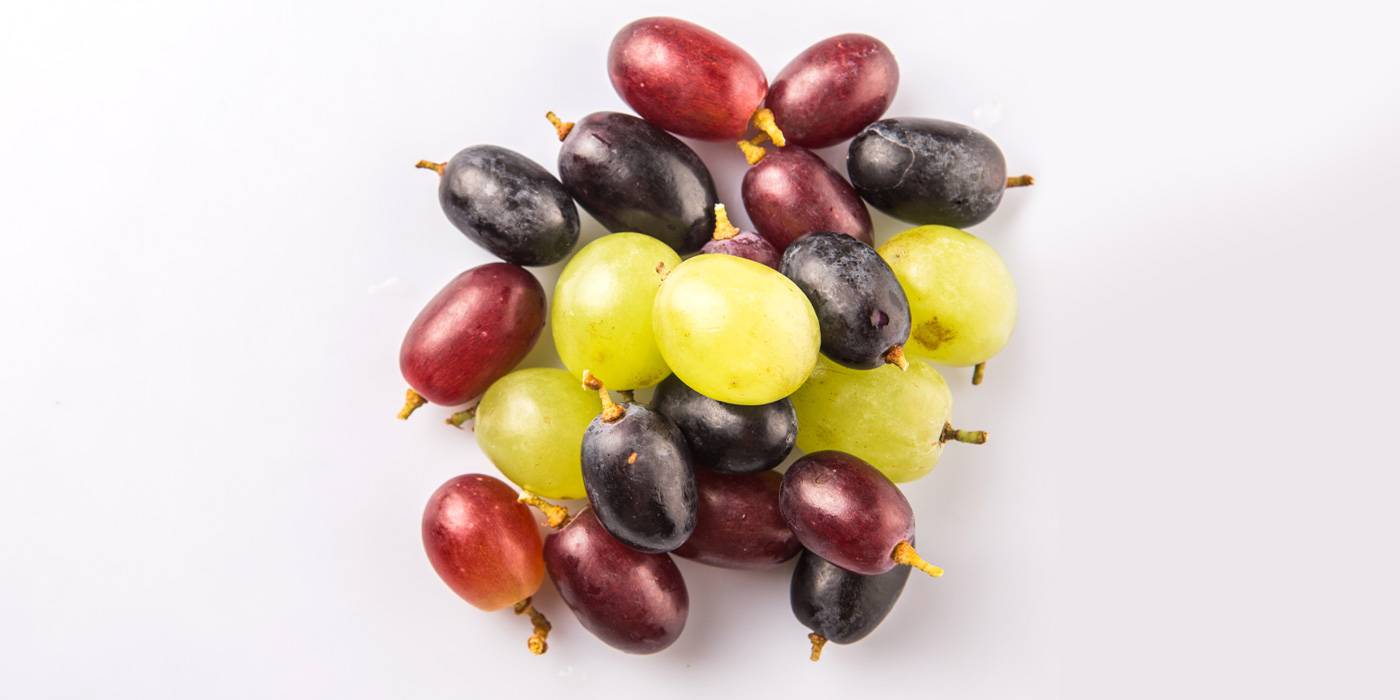Grape varieties

Although it is true that wine is made from grapes, not all of them are suitable for producing a good wine.
The primitive Vitis Silvestre needed centuries to be domesticated as Vitis Vinifera, by means of training systems, pruning, treatments, etc. that allow the best fruit to be obtained in order to make wine.
There are more than 10,000 grape varieties in the whole planet: white, red, with aromas that differ from one to the other, larger or smaller, with thicker or thinner skins, with looser or tighter clusters... This, together with the fact that each grape variety is different depending on the region in the world where it is grown, the type of winemaking applied by the oenologist, the growing methods that each winegrower decides to use, or the ageing to which it is subjected, means that the possibilities become infinite.
BUT HOW DO YOU DECIDE WHICH GRAPES TO USE TO MAKE WINE?
Let's first differentiate between wine production grapes and table grapes. The latter are the ones we eat, and we can find white, pink, and purple ones; they are usually bigger than the grapes used to make wine, they have less pips, and their skin is less thick. Our country, especially the Mediterranean basin, is a great producer of them; we have about 235 different types. In fact, at the end of the year in many places we celebrate the New Year with 12 grapes from this area.
The type of grape to be planted is very relevant, and will depend on several factors:
- If we are going to produce our wine within a Designation of Origin, hich is a system that guarantees the origin and quality of a product. This will be the body that tells us which varieties can be produced in that area.
- Another factor to take into account is the adaptability of each grape to a particular area. That is to say, not all grapes do their best in the same place, so it is necessary to know which ones adapt perfectly to the climate, soil, orientation... of our vineyard.
- We will take into account the kind of wine we want to make. If it is going to be white, red, rosé, sweet, fortified, sparkling...
- The style of wine according to its objective. We can opt for more productive varieties if we want to make large quantities of wine. Or less productive varieties if we earmark our harvest for wines with greater depth and quality.
- Another aspect to bear in mind is whether or not our wine is going to be aged in barrels or other containers as not all varieties allow for favourable evolution over time.

MAP OF GRAPE VARIETIES IN SPAIN
These, together with other cultural, historical aspects, etc. result in a highly diverse map of varieties and wines across our geography. This is how it looks in broad terms:
Levante: desde from Catalonia to Murcia, passing through Valencia and Alicante, we find Mediterranean type grapes. The Monastrell is undoubtedly the most important variety. It is a late budding variety, resistant to winter colds. The berries are small and sweet, with all the necessary qualities to produce wines with good tannin, excellent alcohol content, and good ripening potential. And, in white grapes, the Moscatel, which is widespread throughout the Mediterranean, plays a leading role, producing world-famous dry and sweet white wines. Varieties such as Cariñena, Merseguera, Verdil, Bobal…
Aragón, Navarra, la Mancha and the interior of Catalonia: here the most widely grown grape in Spain reigns supreme: the Garnacha, a red grape that can show a thousand facets depending on the area and its production. A highly resistant variety with a lot of identity. Often complemented with foreign varieties, such as Cabernet Sauvignon, Merlot, Cabernet Franc, Syraz…
La Rioja: this is undoubtedly the birthplace of one of our most emblematic varieties, Tempranillo, so much so that we often use the name of the variety to order a Rioja wine. Together with Mazuelo, la Garnacha, la Maturana Tinta y la Graciano, they make up the basic coupage of the region's red wines. Let's not forget the white wines: Viura, Malvasia, Torrontés,…

The North, Galicia, Asturias, Basque Country: they take advantage of moisture-resistant and short-cycle varieties that are able to ripen with the extreme Atlantic climates. Often, they are minority varieties, but with a large assortment of wines produced with them: Mencia, Caiño, Brancellao… and noteworthy among the white ones: Albariño, Godello, o Treixadura.

A curious thing is that the same grape has different names depending on the region where it is grown, as is the case of Tempranillo, as we know it in La Rioja, but in Ribera del Duero it is known as Tinta Fina, Tinta de Toro in the Toro D.O. or Ull de LLebre in Catalonia.
Andalucía: this is the birthplace of fortified and sweet wines, made with the Palomino Fino, Moscatel o Pedro Ximénez, giving rise to some of the most mythical wines that our country produces.
The Canary Islands: they treasure varieties that have withstood the passage of time, wars, and invasions, and that is why their wines are so personal and inimitable.
And our sparkling wines? Without a doubt, the trilogy of Xarel·lo, Perellada y Macabeo re the stars of the mixture, although other grapes such as Chardonnay or Pinot Noir are authorised for production.
Given this incredible range of grapes, aromas, flavours, productions... are you going to keep drinking the same thing? Dare and enjoy the variety of wines that exist!
What do you think about?
Share comments, opinions and tricks with the Community







